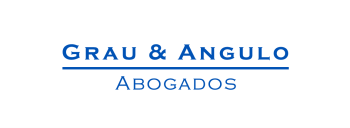In a February 10 2014 decision the Barcelona Commercial Court 4 dismissed a preliminary injunction motion filed by Novartis against several generic competitors for alleged infringement of European Patent 2292219B1 ('EP'219'), which relates to rivastigmine transdermal patches for the treatment of Alzheimer's.
Novartis commercialises two sizes of rivastigmine patches (Exelon®) (5 centimetres (cm) squared and 10cm squared) and has faced generic competition in Spain since mid-2013. In late November 2013 Novartis sued its generic competitors for alleged infringement of the EP'219 patent and requested a preliminary injunction seeking their withdrawal from the Spanish market.
EP'219 is a divisional patent. It was granted on June 12 2013 and its Spanish translation was published on July 19 2013. The patent has a single claim, which reads as follows:
"Rivastigmine for use in a method of preventing, treating or delaying progression of dementia or Alzheimer's disease, wherein the rivastigmine is administered in a TTS and the starting dose is that of a bilayer TTS of 5 cm2 with a loaded dose of 9 mg rivastigmine, wherein one layer:
has a weight per unit area of 60 g/m2 and the following composition:
- rivastigmine free base 30.0 wt %
- Durotak® 387-2353 (polyacrylate adhesive) 49.9 wt %
- Plastoid® B (acrylate copolymer) 20.0 wt %
- Vitamin E 0.1 wt %
and wherein said layer is provided with a silicone adhesive layer having a weight per unit area of 30 g/m2 according to the following composition:
- Bio-PSA® Q7-4302 (silicone adhesive) 98.9 wt %
- Silicone oil 1.0 wt %
- Vitamin E 0.1 wt %."
According to Novartis's interpretation of the claim, it would protect a dosage regime characterised by a certain "starting dose", regardless of the specific structural features of the rivastigmine patch. In particular, Novartis argued that such starting dose would be the amount of rivastigmine released by the patch used during the first phase of the treatment, and that the specific patch defined in the claim was only a mere reference parameter to define such released dose indirectly.
In this regard, Novartis affirmed that the claimed starting dose was in fact 4.6 milligrams (mg) in 24 hours, as this was the amount of rivastigmine released by the Exelon 5cm squared patch, which would have the same structural features as the patch defined in the claim. Thus, according to Novartis, any patch which releases 4.6mg of rivastigmine in 24 hours during the first phase of treatment would fall within the scope of the claim and would thus infringe the EP'219 patent, regardless of the structural features of the patch.
Novartis argued that this was the case for the defendants' rivastigmine patches, despite the fact that they did not comprise all the structural features of the claim.
However, the judge rejected Novartis's broad construction of the patent claim based on the following considerations:
- According to Article 69 of the European Patent Convention, the extent of the protection conferred by the patent shall be determined by the claim, whereas the description shall be used to interpret the claim.
- Nothing in the wording of the EP'219 claim would allow the structural features of the patch defined therein to be disregarded.
- If an example of the description is included in the claim, as in the case at hand, then that specific embodiment becomes the definition of the protected invention.
- According to the description, the structural features of the patch were meant to improve the properties of the rivastigmine patches from the state of the art.
- The description of the patent made no reference to any specific released dose (4.6mg per 24 hours). Such dose was not mentioned in the description which, legally, is the first element to be considered when interpreting the claim.
- Novartis's interpretation of the claim contravened the Protocol on the Interpretation of Article 69, according to which this provision should "not be taken to mean that the claims serve only as a guideline and that the actual protection conferred may extend to what, from a consideration of the description and drawings by a person skilled in the art, the patent proprietor has contemplated".
Therefore, the court concluded that there was no reason to ignore the structural features of the patch included in the claim and, because it was not disputed that the defendants' patches did not reproduce all of them, the preliminary injunction could not be granted.
Novartis has filed an appeal with the Barcelona Court of Appeal.
For further information on this topic please contact Sara Pelaz at Grau & Angulo by telephone (+34 93 202 34 56), fax(+34 93 240 53 83) oremail ([email protected]). The Grau & Angulo website can be accessed at www.gba-ip.com.



